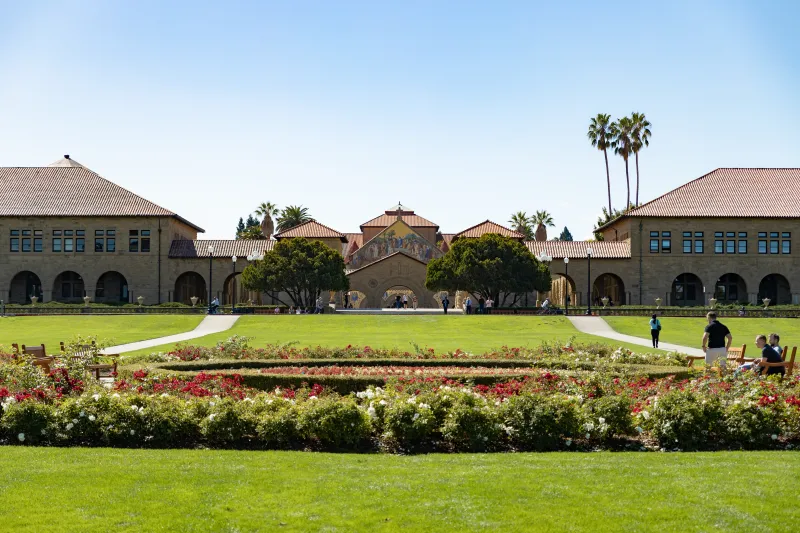Despite being a small community — just 57 were accepted last year, with an acceptance rate of under two percent — transfer students have driven campus-wide changes and led myriad initiatives to improve the transfer experience.
Christian Sanchez ’24, former Associated Students of Stanford University (ASSU) vice president, spearheaded advocacy for the implementation of a tiered enrollment plan that prioritized transfer students in class registration.
Sanchez hopes that other student-led advocacy efforts can make the path from community college to prestigious institutions more navigable.
“Transfer students are able to apply for more internships, scholarships and other opportunities because the criteria are more specific and inclusive,” Sanchez said.
Sanchez said that transfer students often stay connected with the community colleges they come from, building “a network of community college students, faculty and staff that helps demystify the admissions process and financial aid for Stanford.”
Other transfer students participated in initiatives to support transfers in the transition to Stanford.
Sarah McCarthy ’23 co-led the Transfer 101 program, a one-unit, student-led and discussion-style course for transfer students that is designed to build community and foster a sense of belonging.
According to the University’s “What is Transfer 101?” website, the program was designed to “respond to the needs and experiences of the transfer student population which is uniquely diverse.”
McCarthy graduated this spring with a degree in computer science. She attended Laney Community College for her frosh year, where she explored her passion for chemistry, before transferring to Stanford.
“I worked in two research labs [at Stanford and U.C. Berkeley],” McCarthy said. She also worked as an academic tutor and a chemistry teaching assistant.
Instead of waiting until her sophomore year to apply as a transfer student, McCarthy applied during her frosh year “as a practice round during the current application cycle — figuring I would learn a lot about the process and have a better chance next year when I was seriously applying to transfer.”
She was shocked when she was accepted: “I couldn’t stop saying ‘Oh my god, I got into Stanford,’” McCarthy said.
Sebastian Pintea ’25, an incoming junior, shared McCarthy’s shock. Pintea said receiving his acceptance letter “felt so unreal,” because Stanford was his dream school.
For Pintea, the transfer student application process was made more uncertain and difficult by the lack of information available.
“The hardest part is going into the process kind of blind,” Pintea said, since resources for transfer students can be scarce and the process can be daunting.
Pintea had first applied to Stanford as an incoming frosh and was denied admission. He chose to attend Santiago Canyon Community College (SCCC) and used that time to further explore his passions, before giving Stanford another shot in the last admissions cycle.
During his time at SCCC, Pintea developed an interest in interdisciplinary psychology and environmentalism. Last summer, he conducted research at Columbia University, where he studied the intersection of climate change and mental health. At Stanford, Pintea plans to major in psychology with a focus on environmental science through the earth systems program.
Pintea said receiving his acceptance letter “felt so unreal,” because Stanford was his dream school. Drawing from his personal experiences, he stressed how being resourceful and taking advantage of all opportunities helped him craft his transfer application.
McCarthy emphasized that being herself was extremely important throughout her application process.
While the transfer journey to prestigious universities like Stanford is marked by challenges, transfers charted their own success at Stanford and sought to create a more welcoming environment for other transfers.
Sanchez encouraged prospective and incoming transfer students to believe “you are enough and you are worthy.”
Editor’s Note: A previous version of this article incorrectly identified Christian Sanchez’s role and actions as part of ASSU. The Daily regrets this error.
